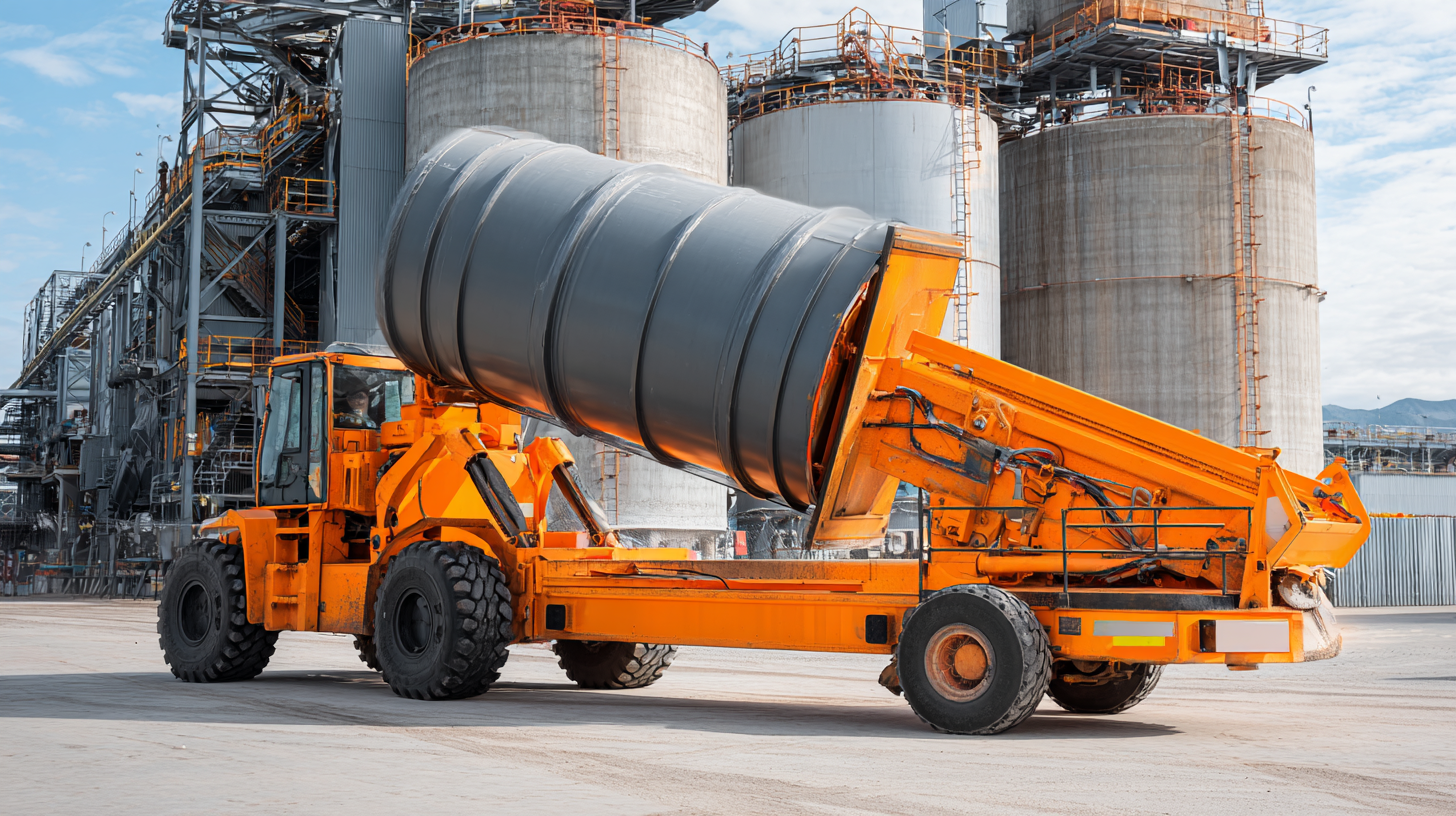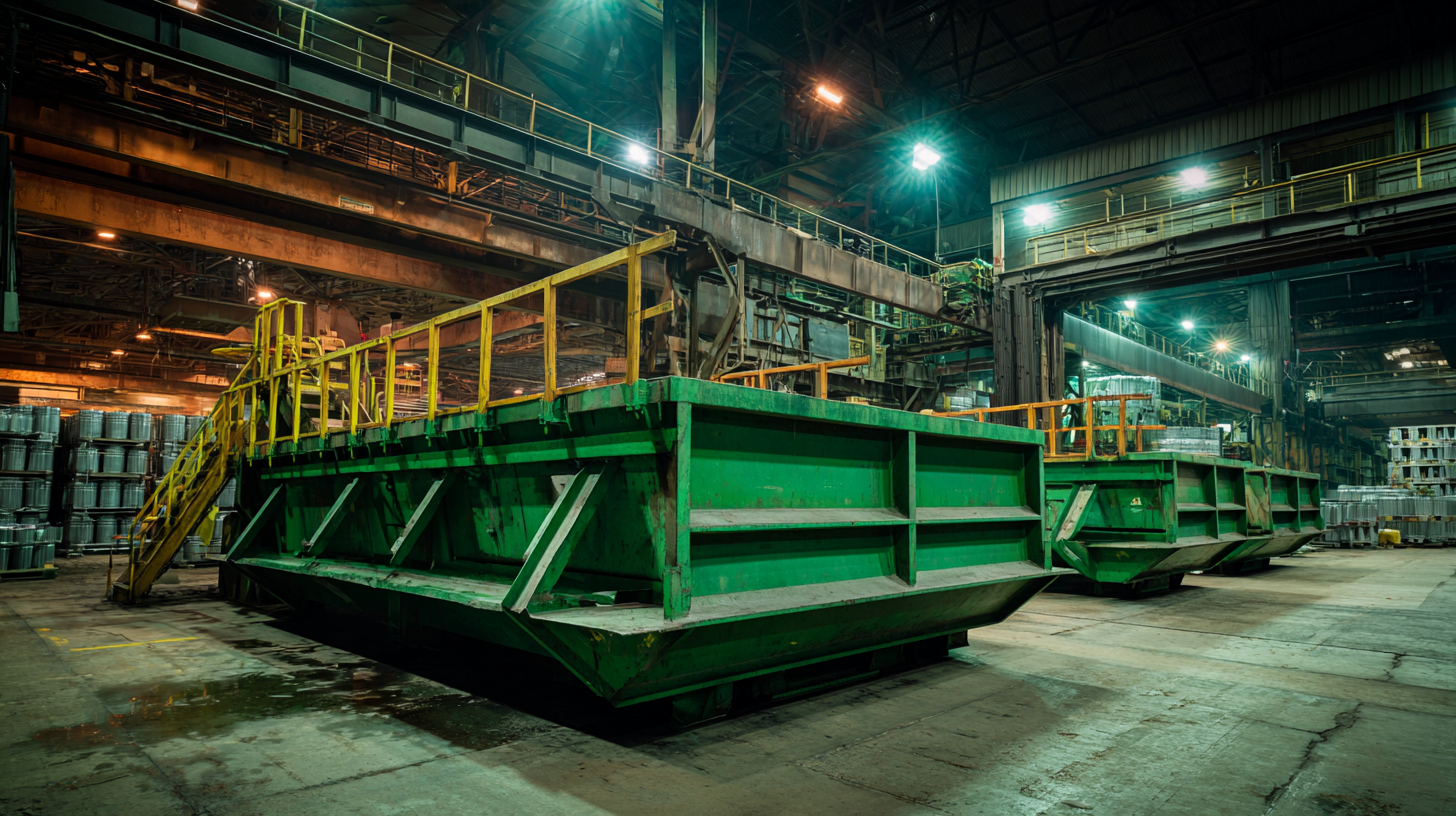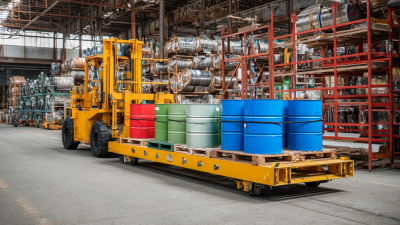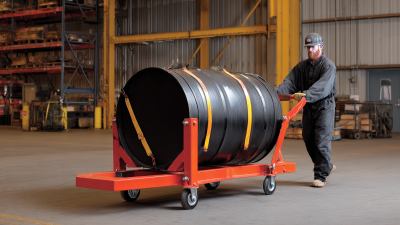Maximize Efficiency with the Right Drum Tipper Choosing the Best Model for Your Industrial Needs
In today’s highly competitive industrial landscape, optimizing operational efficiency is crucial for success, and one effective way to achieve this is through the use of drum tippers. According to a market analysis by Grand View Research, the global industrial drum handling equipment market is expected to reach $1.2 billion by 2025, reflecting a growing recognition of the importance of ergonomic and efficient handling solutions. A drum tipper not only streamlines the process of transferring liquids and materials but also significantly reduces the risk of workplace injuries, which account for nearly 30% of all industrial accidents, as per the National Safety Council. Therefore, selecting the right drum tipper model tailored to specific industrial needs can lead to enhanced productivity, safety, and overall operational efficiency. In this guide, we will explore essential factors to consider when choosing the most suitable drum tipper for your operations.

Maximizing Production Efficiency with the Right Drum Tipper Selection
Maximizing production efficiency in industrial settings often hinges on the selection of appropriate equipment, such as drum tippers. According to a report by the Material Handling Industry of America, optimized equipment selection can enhance operational efficiency by up to 30%. This improvement is particularly notable in facilities dealing with significant volumes of bulk materials, where the right drum tipper can not only speed up the transfer processes but also reduce the manual labor required, mitigating associated workplace injuries.
When evaluating drum tippers, considerations such as load capacity, tipping height, and safety features are critical. The Occupational Safety and Health Administration (OSHA) emphasizes that ergonomically designed equipment can significantly decrease fatigue and the likelihood of accidents among employees. In fact, companies that invest in high-quality, suitable drum tipping solutions report a 25% reduction in workplace injuries, which further contributes to production efficiency. Leveraging this data allows industrial operations to make informed decisions when selecting drum tippers, ensuring they align with overall business goals and regulatory standards.
Understanding Different Types of Drum Tippers and Their Applications
When selecting the appropriate drum tipper for industrial applications, it’s crucial to understand the various types available and their specific uses. Drum tippers can be categorized into several models, including manual, semi-automatic, and fully automatic types. According to a recent industry report from the Material Handling Industry of America, the demand for automatic drum tippers has surged by 40% over the last five years, primarily due to increased efficiency and safety measures in workplaces. These machines play a significant role in handling materials such as chemicals and food ingredients, where proper ergonomics and spill prevention are critical.
Furthermore, different industries require specialized drum tippers tailored to their operational needs. For instance, the pharmaceutical sector often employs tippers designed with enhanced safety features to minimize contamination risks. Data from a 2022 manufacturing survey indicated that over 60% of companies in the food and beverage industry prioritize drum tippers that comply with hygiene standards. By selecting the right model that aligns with industry-specific requirements, businesses can not only boost productivity but also ensure compliance with safety regulations, ultimately maximizing overall efficiency in their operations.
Drum Tipper Efficiency Comparison
Evaluating Load Capacities: Choosing the Right Model for Your Industry
When selecting a drum tipper for your industrial applications, evaluating load capacities is crucial. According to a recent industry report by MarketsandMarkets, the global drum handling equipment market is projected to grow by over 5% annually, reflecting the increasing demand for safe and efficient material handling solutions. The load capacity of a drum tipper directly influences its suitability for various applications, from chemical processing to food and beverage industries. It's essential to choose a model that not only meets but exceeds your operational requirements.

For instance, a drum tipper with a load capacity of 1,000 pounds is ideal for most medium-scale operations, while heavy-duty models can accommodate loads up to 2,500 pounds, as noted in a study by the Industrial Equipment Institute. In addition to capacity, understanding the type of drum you'll be handling—steel, plastic, or fiber—can affect your choice. Models specifically designed for heavier and bulkier drums provide enhanced stability and safety features, minimizing the risk of accidents and ensuring compliance with industry regulations. Thus, careful consideration of load capacities and material compatibility is essential for maximizing efficiency in your operations.
Cost-Benefit Analysis of Drum Tippers: ROI Insights and Efficiency Gains
Investing in the right drum tipper can dramatically enhance operational efficiency within industrial settings. A recent industry report highlights that organizations utilizing automated drum tippers experience up to a 30% reduction in labor costs. By minimizing manual handling of heavy drums, these machines not only streamline workflows but also reduce the potential for workplace injuries, leading to further cost savings in workers’ compensation claims.
Tip 1: When selecting a drum tipper, consider the weight capacity needed for your operations. Choosing a model that can handle heavier loads ensures long-term utility and maximizes your ROI.
Moreover, the efficiency gains from using a drum tipper can result in a quicker turnaround time for processes involving bulk materials. Data from a 2022 efficiency analysis indicates that companies adopting drum tippers reported a 20% increase in production speed. This improvement can significantly affect overall profitability, as faster material handling translates to higher output rates.
Tip 2: Always assess the specific needs of your operation, including the type of materials being handled and the layout of your facility. Customizing the drum tipper to fit your unique needs can further enhance efficiency and return on investment.
Safety Standards and Compliance in Drum Tipper Operations: Key Considerations
 When operating drum tippers in industrial settings, safety standards and compliance are paramount. These machines, used to handle and empty large drums, must adhere to regulations set forth by organizations such as OSHA (Occupational Safety and Health Administration) and ANSI (American National Standards Institute). Implementing these safety standards not only protects workers but also enhances operational efficiency. Operators should undergo comprehensive training to understand the proper use of drum tippers, recognize potential hazards, and implement best practices for safe operation.
When operating drum tippers in industrial settings, safety standards and compliance are paramount. These machines, used to handle and empty large drums, must adhere to regulations set forth by organizations such as OSHA (Occupational Safety and Health Administration) and ANSI (American National Standards Institute). Implementing these safety standards not only protects workers but also enhances operational efficiency. Operators should undergo comprehensive training to understand the proper use of drum tippers, recognize potential hazards, and implement best practices for safe operation.
Furthermore, regular maintenance and inspections are essential to ensure that drum tippers remain compliant with safety standards. Companies should establish a routine maintenance schedule that includes checking structural integrity, hydraulic systems, and safety features such as emergency stops. Compliance with relevant safety standards also involves ensuring that the drum tippers are used in suitable environments, avoiding scenarios such as uneven surfaces or overcrowded workspaces that could lead to accidents. By prioritizing safety and compliance, companies can create a work environment that minimizes risk and maximizes productivity.
Related Posts
-

How to Optimize Your Production Line with an Efficient Drum Dumper Solution
-

Ultimate Guide to Choosing the Right Hydraulic Drum Lifter: Factors, Benefits, and Market Insights
-

Innovative Uses for the Drum Hand Truck in Various Industries
-

Exploring Innovative Alternatives to Drum Lifters and Tilters for Efficient Material Handling
-

A Comprehensive Comparison of Drum Lifters and Tilters Efficiency in Industrial Applications
-

How to Optimize Your Drum Tipper for Maximum Efficiency
